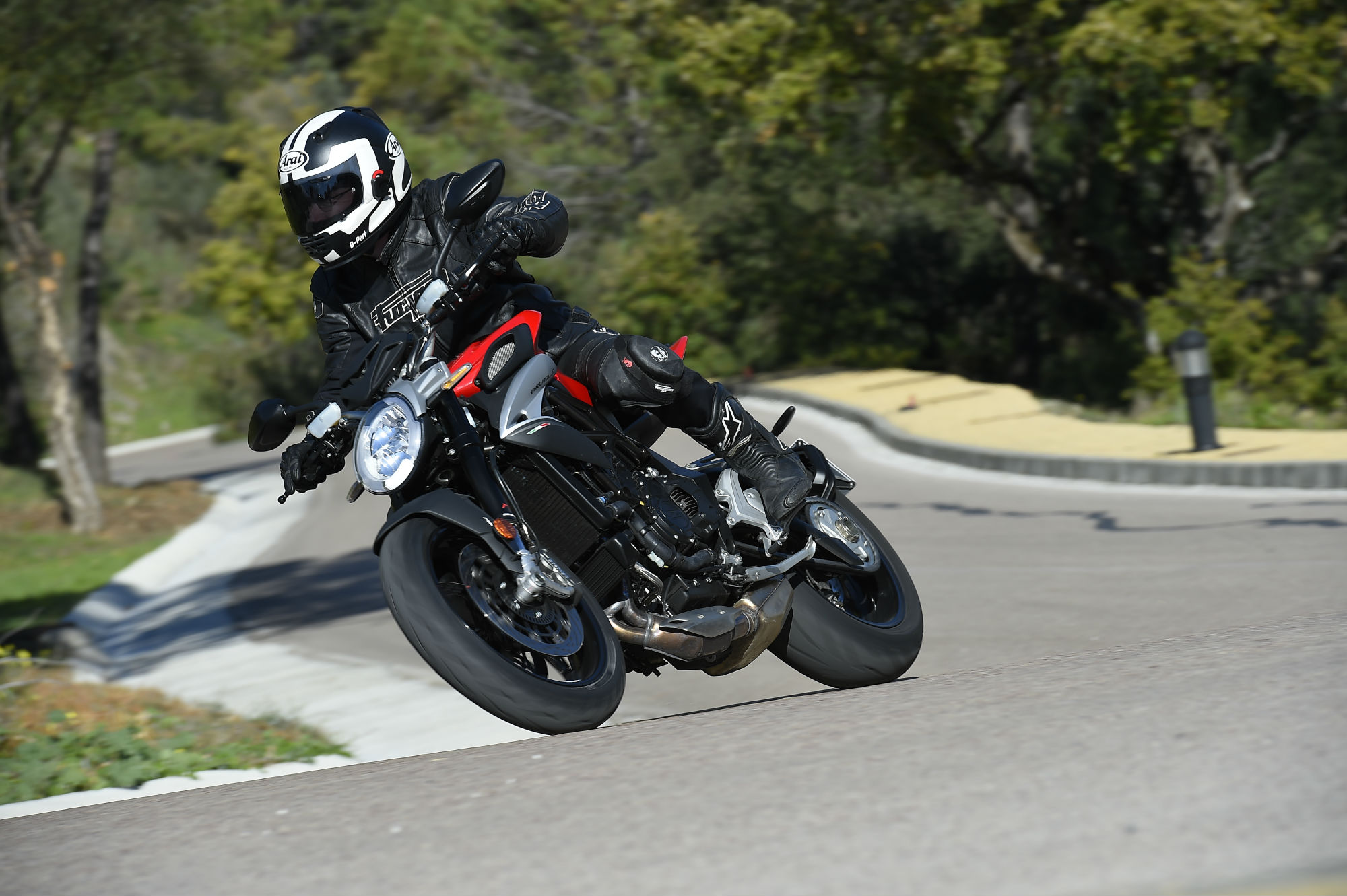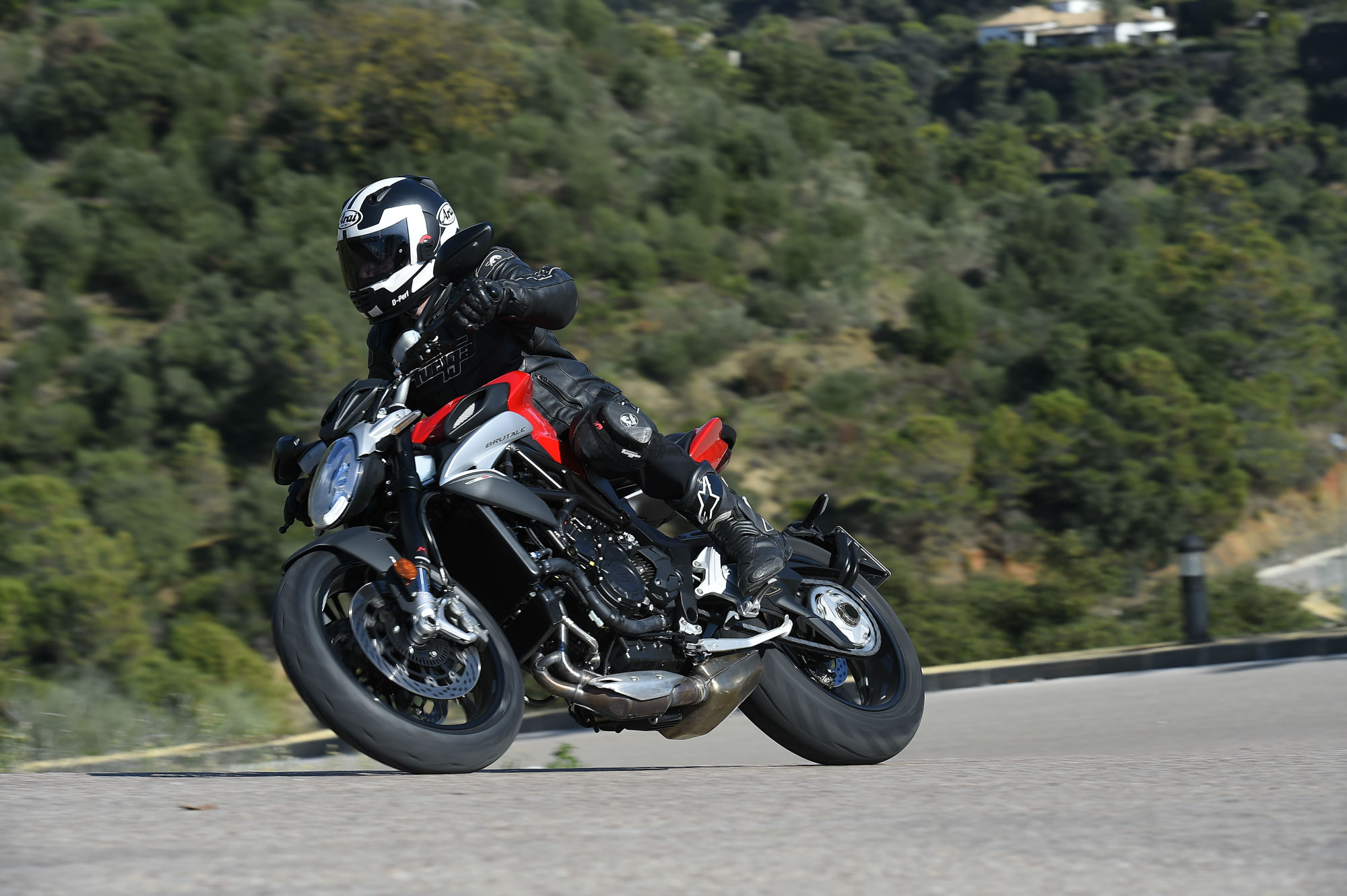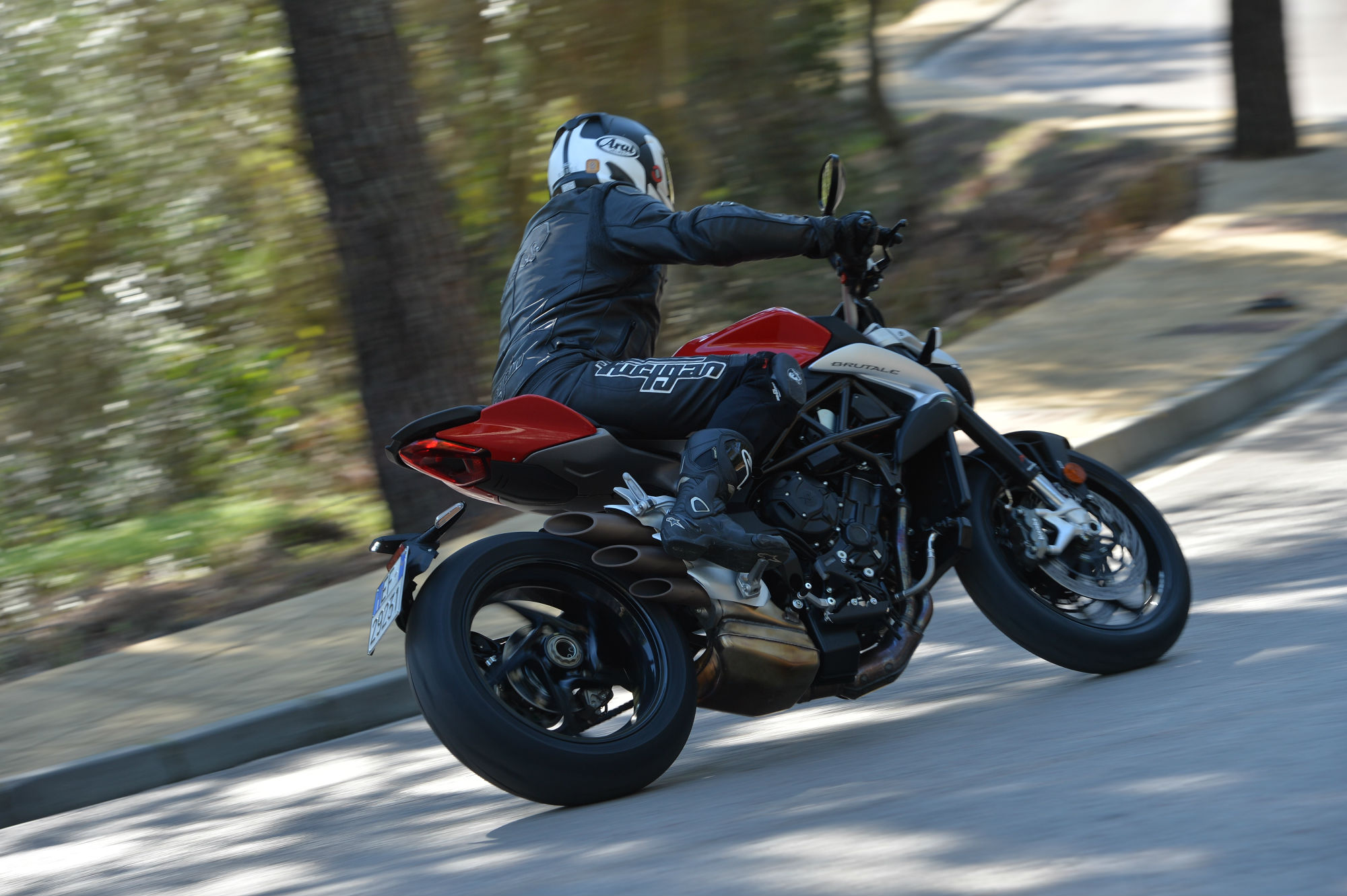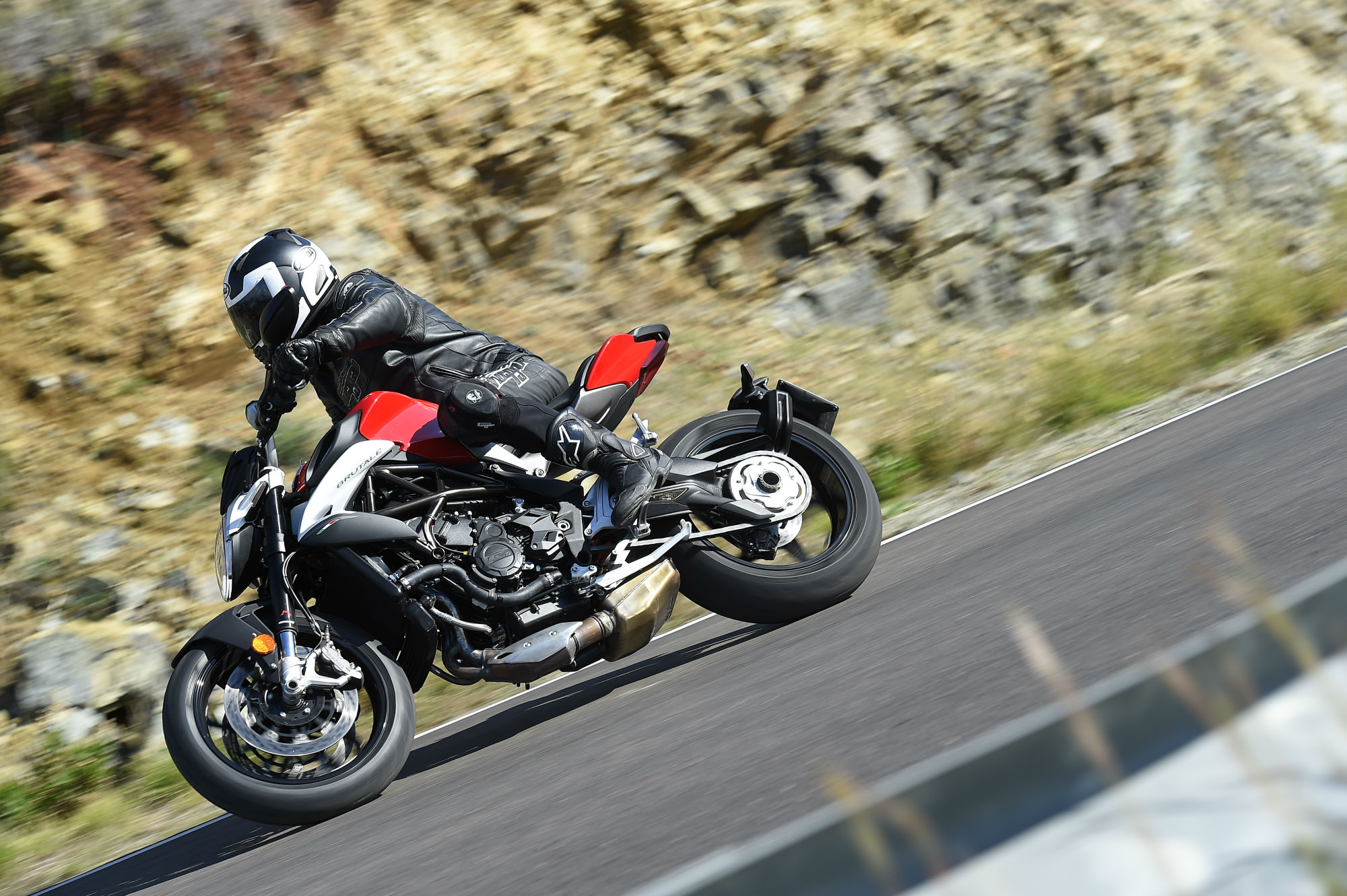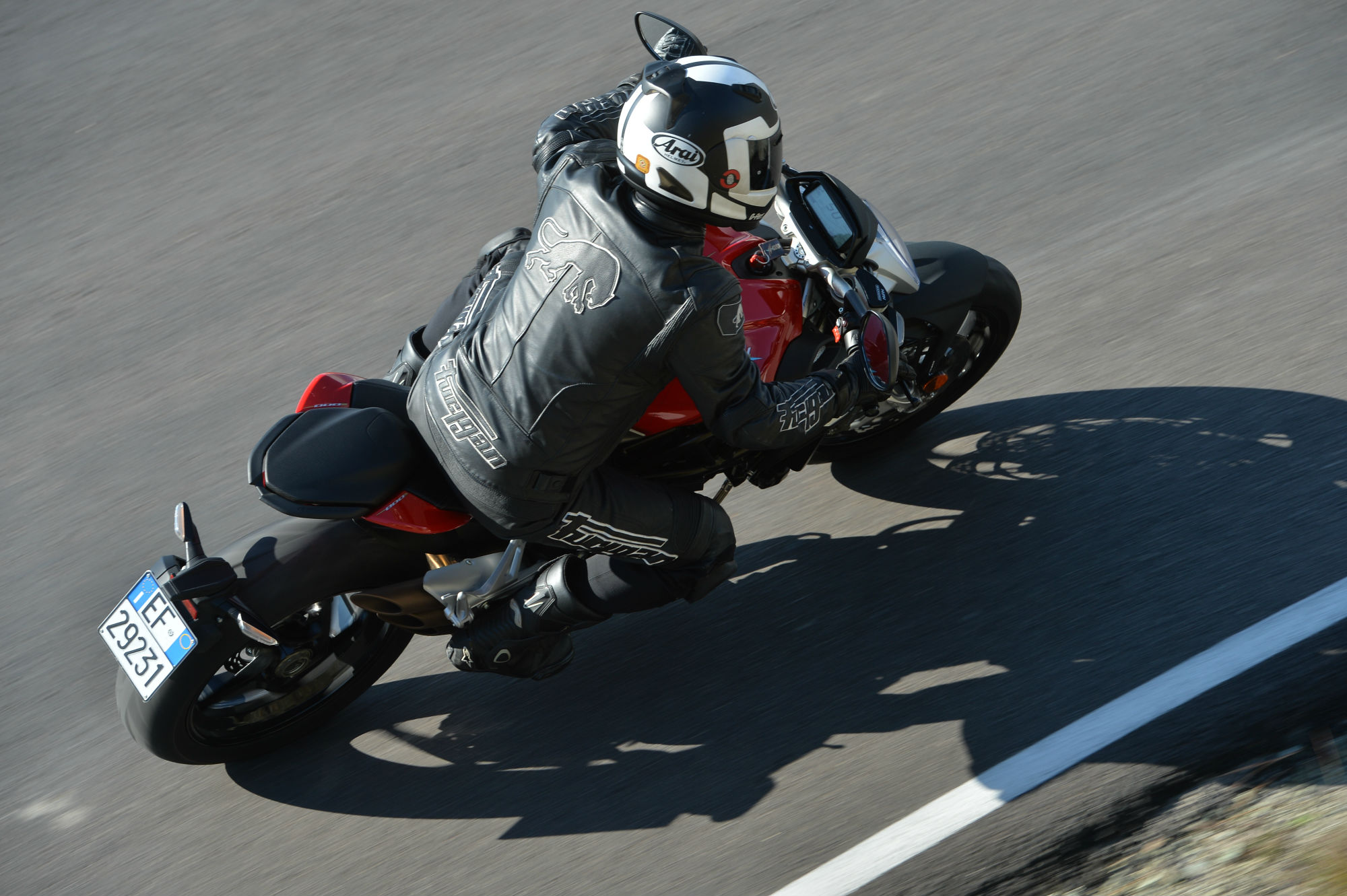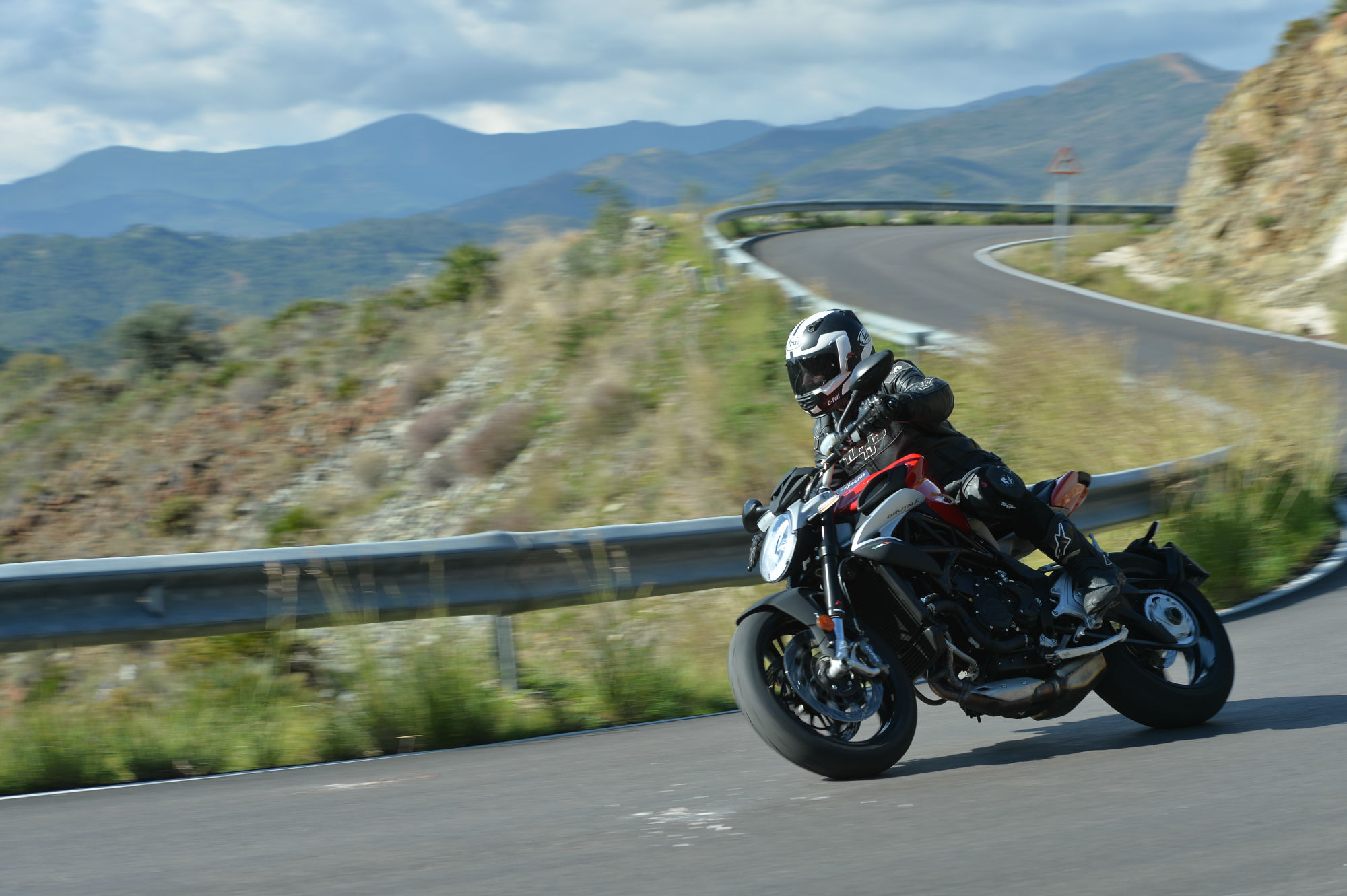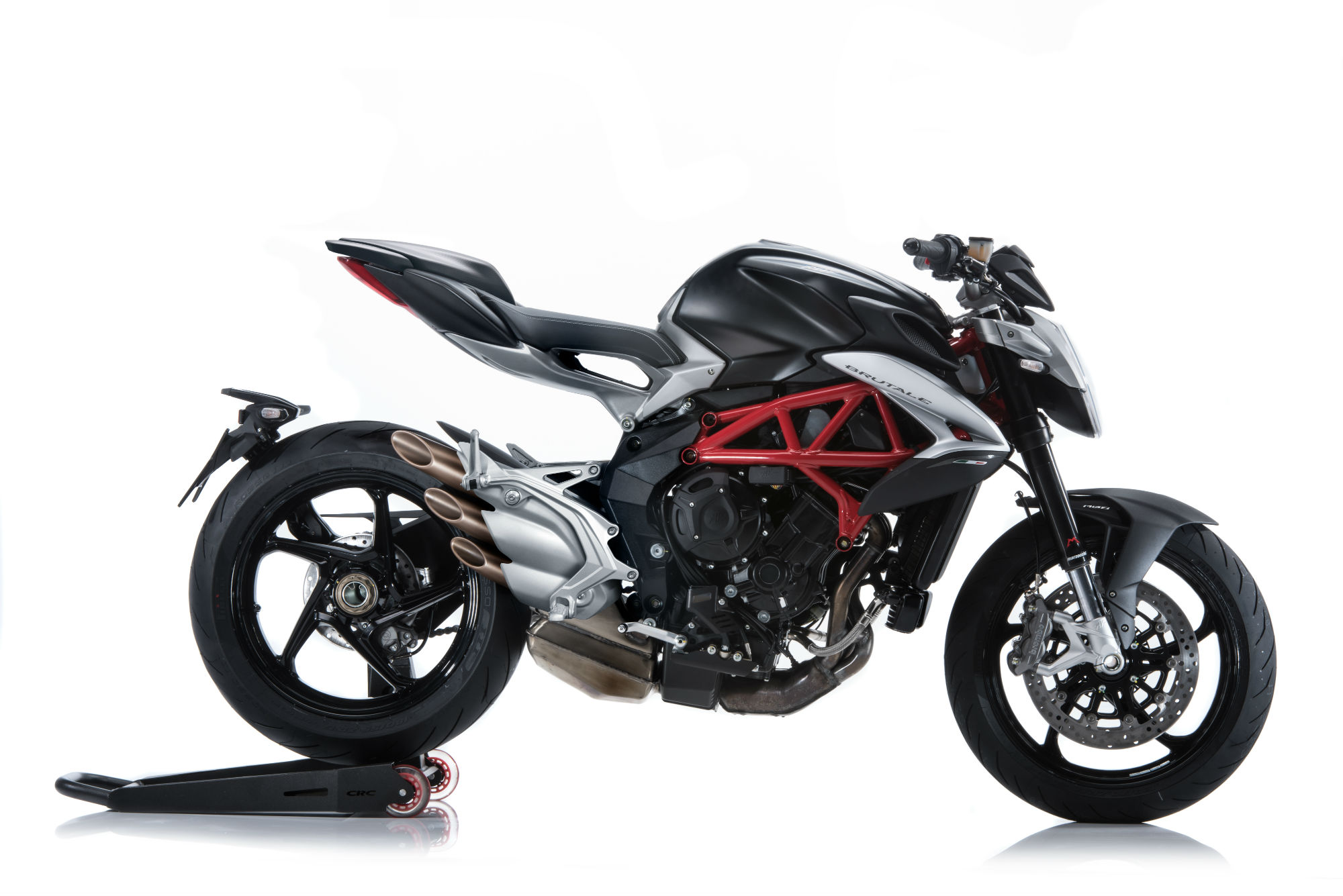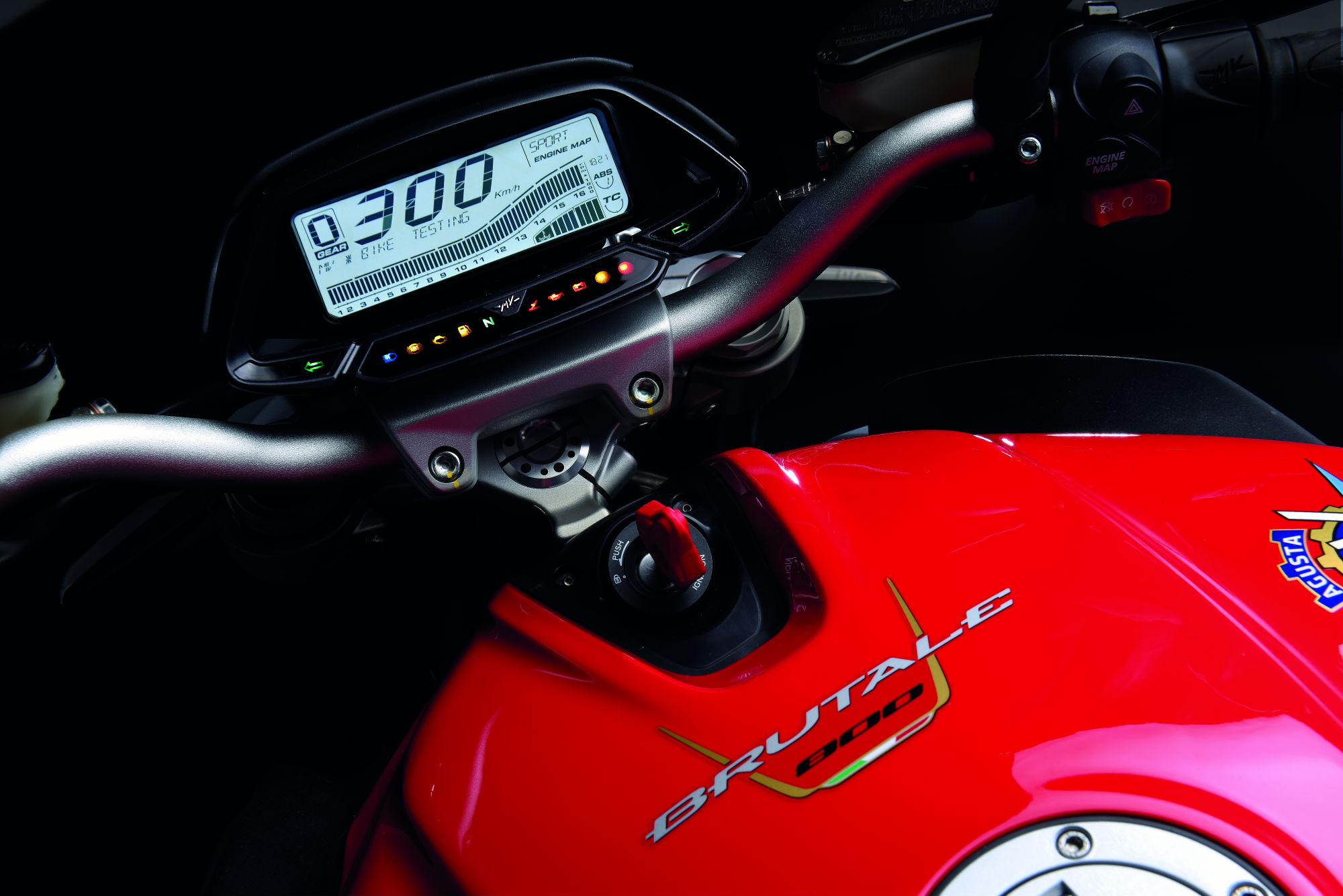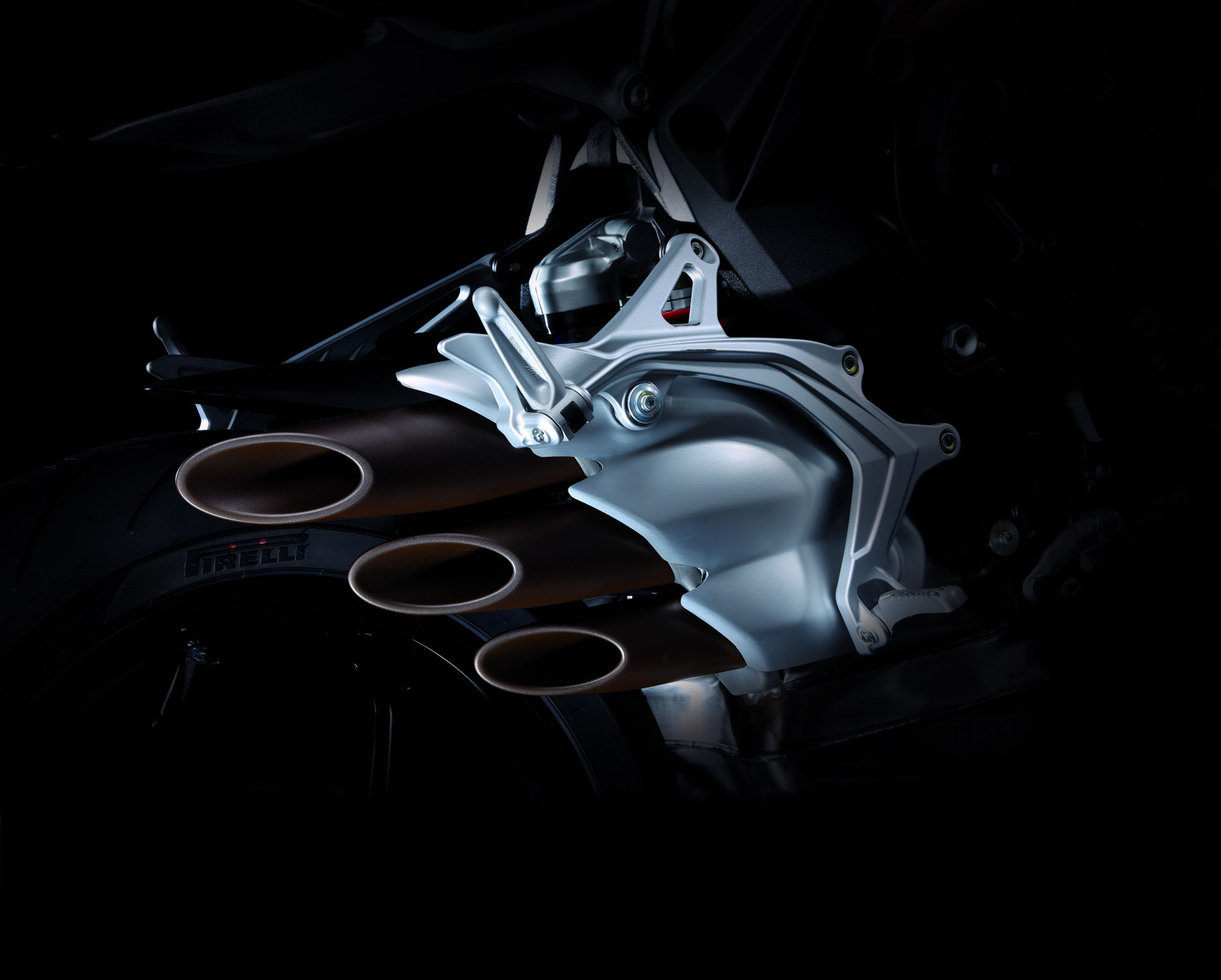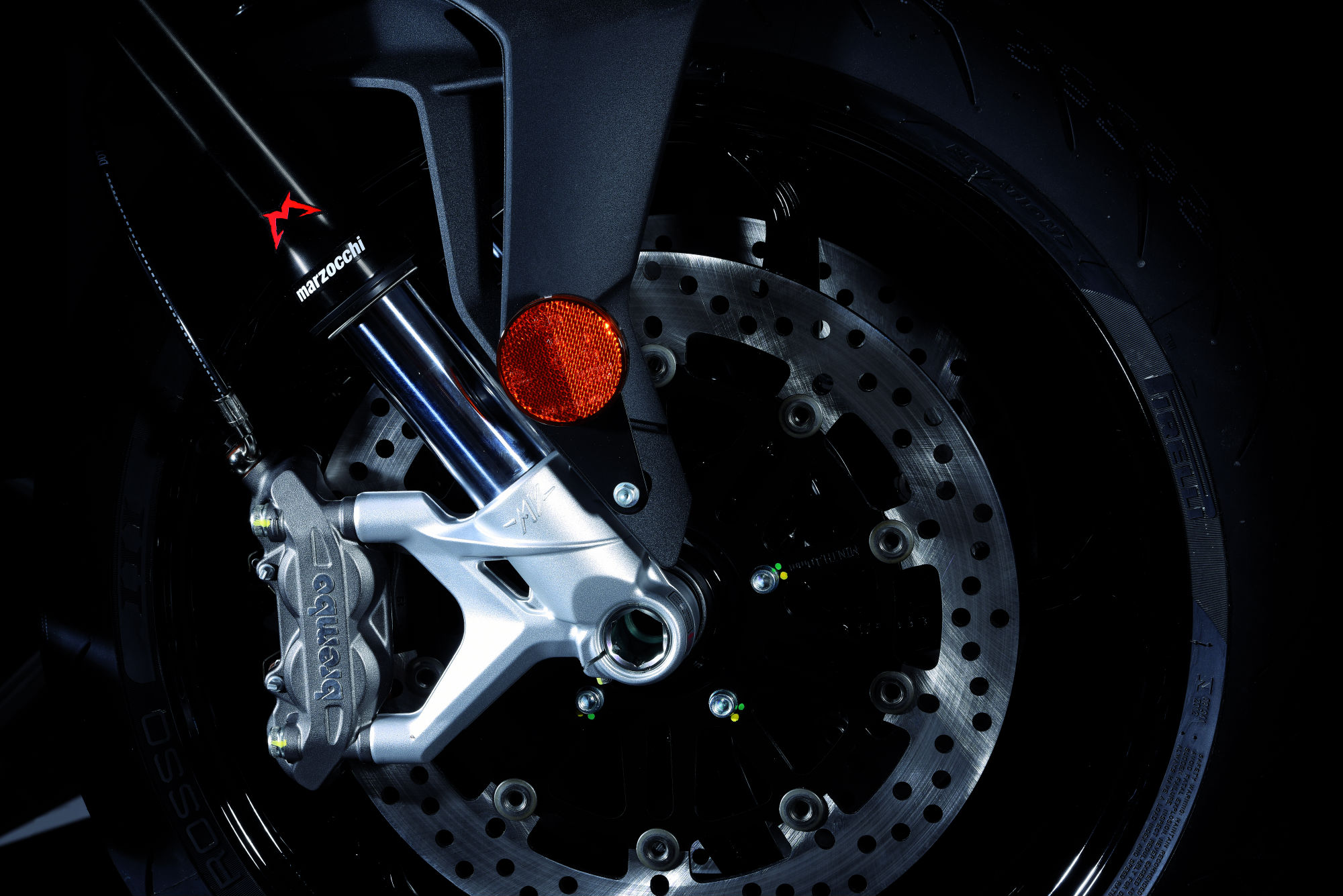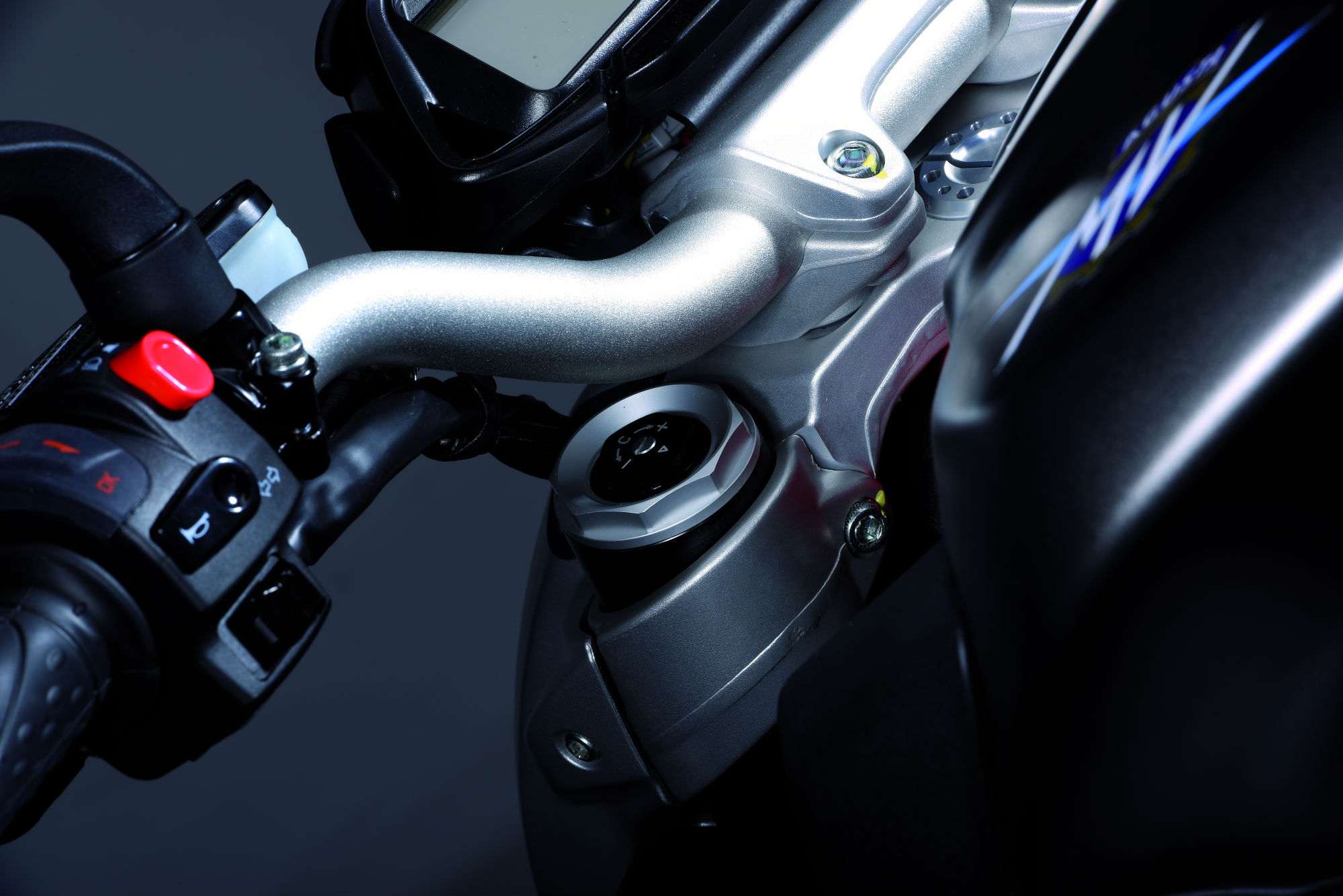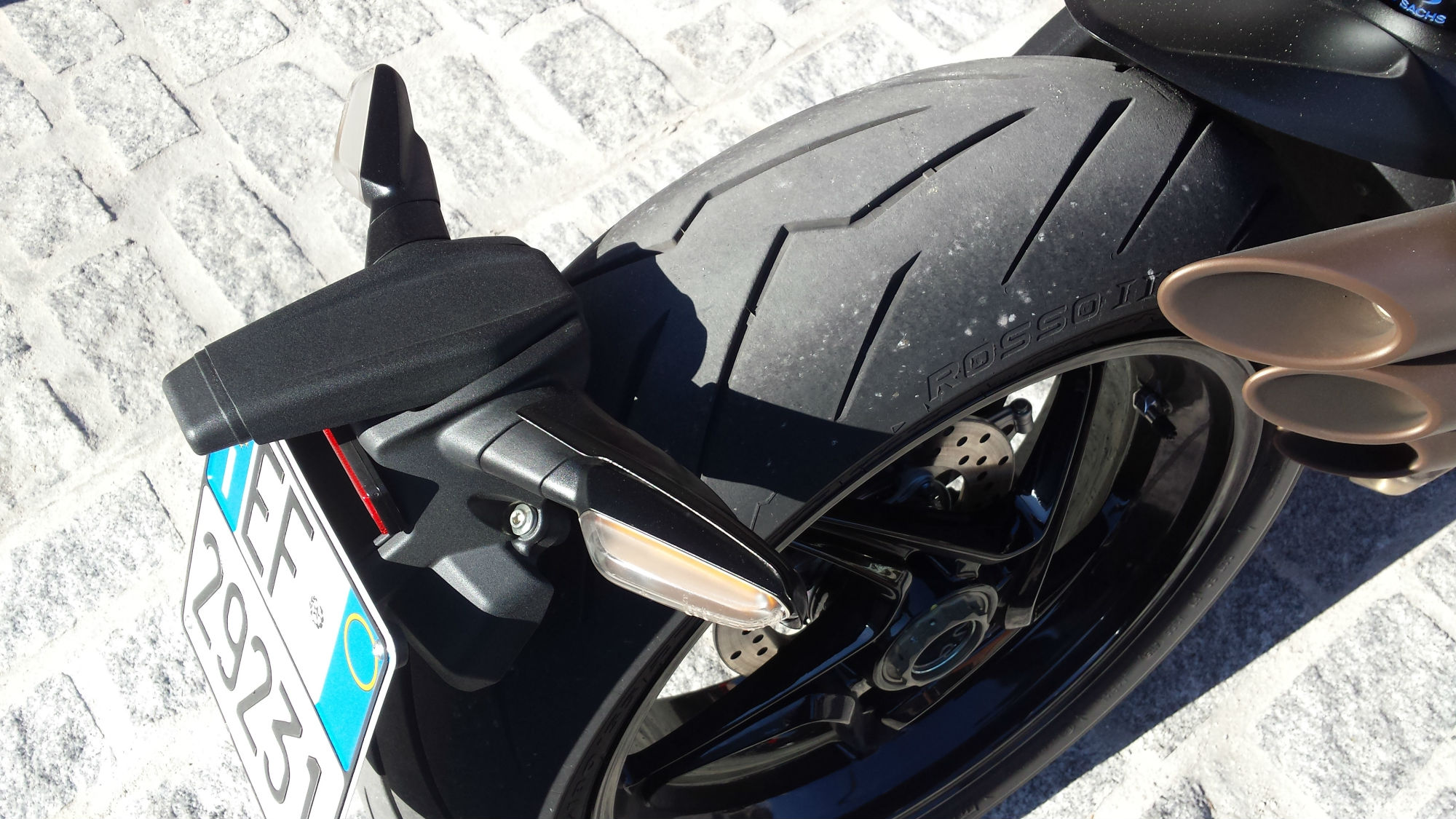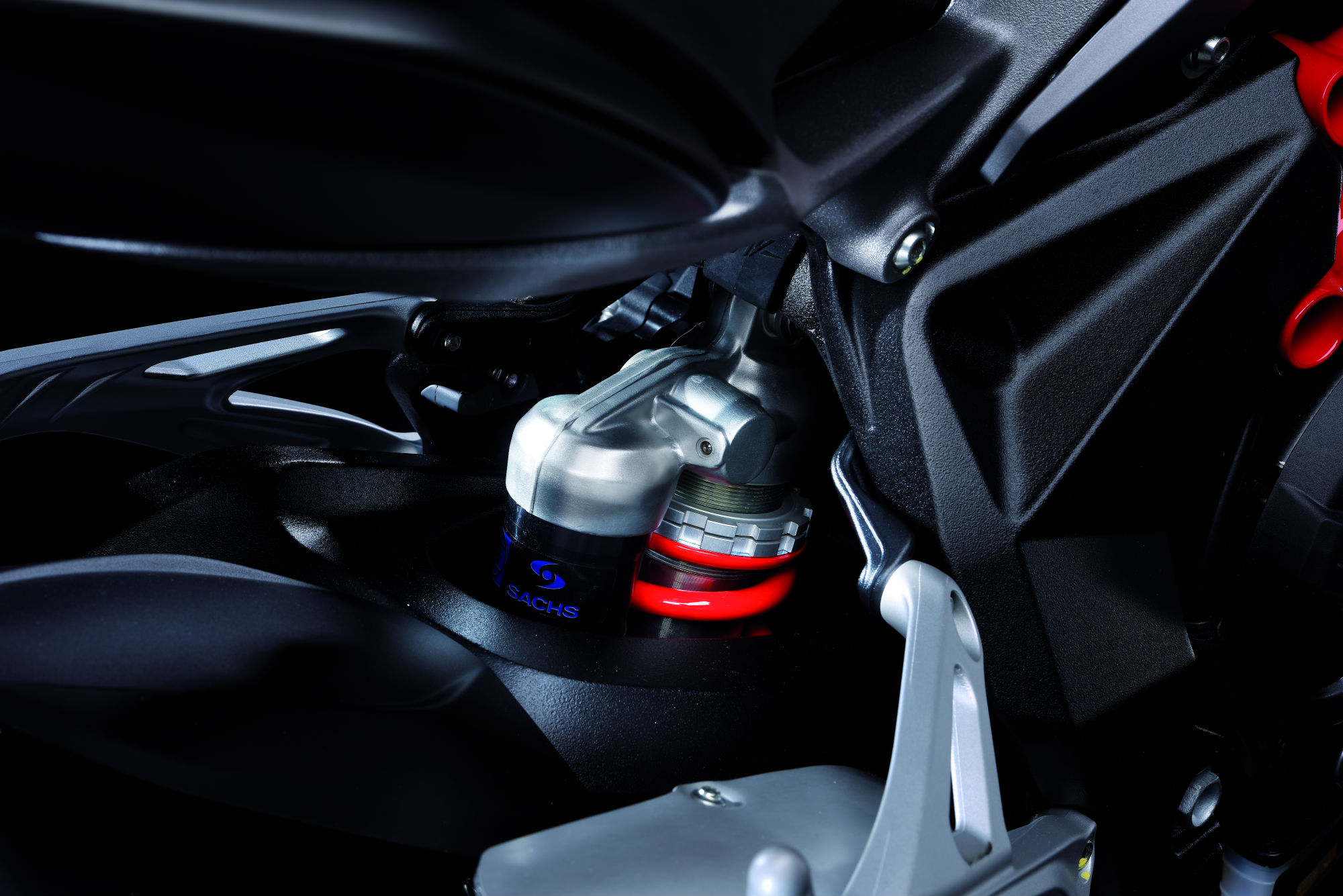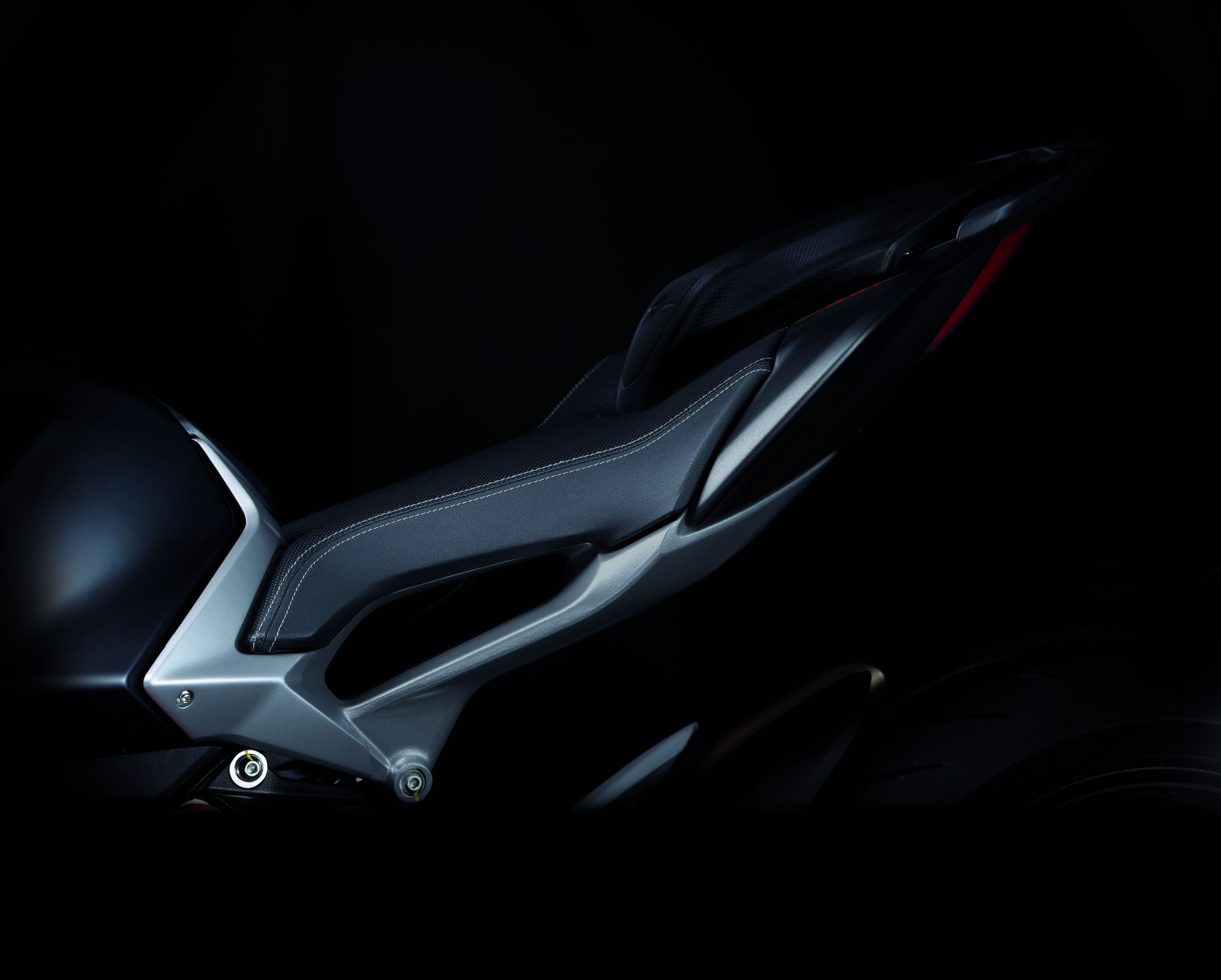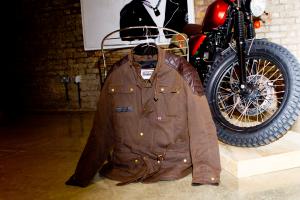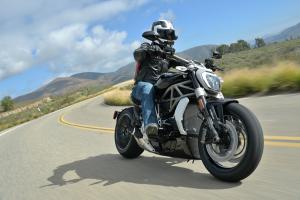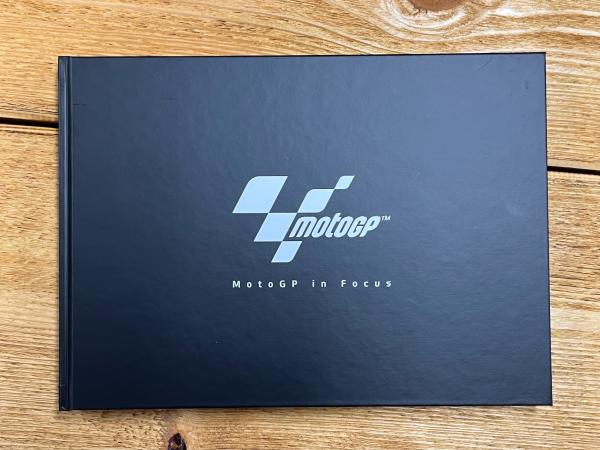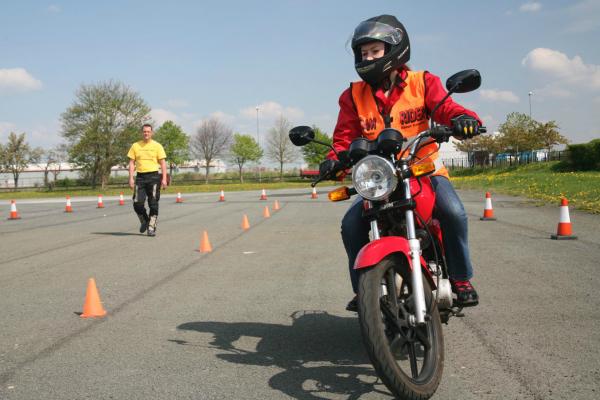MORE power, less weight. Those are the traditional headline claims every time a bike is updated, aren’t they?
Not this time. MV Agusta has broken with tradition by making the new Brutale 800 less powerful than the old one, at 116hp compared to 125.
Peake torque is up, but only a bit, at 61lbft compared to 57.8. And it’s a little heavier, at a claimed 172kg dry compared to 167.
That's not the whole story of course. Less power and more weight isn’t a new MV strategy. The firm hasn’t made ‘heavier and slower’ its new company mission.
A peak is only useful at one particular rpm and most of the time we have the needle somewhere else, MV argues. So instead of focusing on peaks, they've improved all those other rpm, where we do spend nearly all our time.
The maximum of 67lbft lies at 7,600rpm but the latest version of the 798cc triple engine is claimed to make at least 90% of that (60lbft or more) everywhere from 5,000rpm to the red line, at around 12,000.
So while the peak is only up by about 3lbft, the increase in the low-to-mid-range is up to 18% according to MV.
A range of engine revisions and a bulky new exhaust have also made the Brutale 800 Euro4 compliant, possibly explaining the motive for updating the model.
In terms of torque, it's the same philosophy that MV adopted with the 110hp Turismo Veloce, with which the Butale shares its engine: swap power which you don't usually use for torque that's always to hand.
It gives the Brutale 800 the same capacity for making leisurely work of a good pace, but in a lighter and more compact package.
The engine makes a distinctive raspy noise which rises several decibels and takes on a note of induction above 5,000rpm. There is enough drive anywhere from there to the red line to accelerate with gratifying urgency. The Brutale 800 isn’t ludicrously fast but it's always ready to respond.
The spread is sufficiently broad that you hardly need to wait for the revs to get near the 12,000rpm red line before changing up. When you do hold out there's a satisfying, linear build - nothing too dramatic because you're already getting most of it. When you don't hold out, you still get another shovel-load as you knock it up gear.
And knocking the selector with your foot is all you have to do. As well as engine tweaks, the Brutale 800 has a new electronics package including traction control, riding modes, a hydraulic slipper clutch and a quick-shifter.
It allows clutch-less shifts up and down the box, provided you've got the throttle closed on the way down and open on the way up. You've also got to be doing over 12mph - which you will be.
Downshifts are so smooth you'd barely know about them until you opened the throttle again. With a pillion, it will mean less banging heads and a less stressful experience of sitting on that perch-like seat over the rear wheel, clinging to the discreet grab rail.
Without a pillion, it ensures the bike remains settled as you brake for a corner, even if your gear changes are badly timed.
MV chose a good place to show the strengths of the torque and quick-shifter by launching the bike with a ride on the famous Ronda road near Malaga.
It's like a line drawn on the map with a shaky hand, a sequence of bend after fast bend that stretches on until your arms ache from the acceleration and braking forces through the bars.
On the Brutale 800 those forces are relentless but otherwise the work is light, with barely a pause in drive on clutch-less up-shifts, torque wherever you look and a ferociously powerful front brake.
The twin four-pot Brembo radial calipers make one of those set-ups that take a bit of recalibration. Grab the lever like you're on a lesser bike and you're in for a surprise. After a moment of adjustment to their immediate bite, and the delicate touch required, they provide cartloads of controllable stopping force in return for little effort
The rear brake, with a two-piston Brembo caliper, doesn't deliver comparable control or connection, although it has power.
ABS can be switched off using a couple of buttons on the left bar, accessing a menu on the digital dash which also lets you choose between traction control levels zero to eight. You can switch the quick-shifter off too, if you want to use the hydraulic slipper clutch instead.
On the right bar, another button lets you choose between riding modes. There are three pre-set modes - Sport, Normal and Rain, each with its own fuel map, offering a different torque response to a given twist of the ride-by-wire throttle. A fourth mode is customisable.
��
The electronics are fairly simple to navigate, though not as straightforward as some systems. The button on the right bar can require several pushes to change riding mode, one to tell it you want to change and the rest scrolling through the options. The job was made more difficult by the fact the button sometimes simply didn't respond when pressed.
As you'd expect, Sport immediately feels more aggressive than Normal. It also reduces engine braking and delivers growing power virtually all the way to the rev-limiter, whereas the drive tails off a little in Normal to encourage you to change up.
Both are good for reeling in the endless turns of the Ronda road, which also made a good stage for the bike's tweaked geometry. Trail has been increased slightly, from 95mm to 103.5mm, while the wheelbase has grown 20mm to 1,400mm.
The Brutale 800 remains compact and nimble, quick steering. Occasionally the bars did a brief shimmy under hard acceleration, emphasising their sensitivity to light input.
The riding position is upright and comfortable but with your feet slightly further back than typical of a naked bike.
The sharp handling, low weight, plentiful torque and easy gear changes combine to make it feel toy-like.
Suspension comes from a Sachs shock and upside-down Marzocchi fork, both with preload and rebound damping adjustment. The stroke of the shock has been lengthened 'negatively' according to MV, so that it extends more when load is removed, to keep the rear tyre in contact with the road when the bike's ridden hard. It's firm, and so is the seat. Approaching uneven patches of road at perhaps 70mph, I lifted my backside off the seat to avoid being propelled skyward.
The tyres, Pirelli Diablo Rosso IIIs, only gave me cause for doubt once, when the front slid a fraction on a roundabout, but I'll put that down to a super-smooth road surface.
Dash equipment includes a lap timer, but you don't get a fuel gauge, only a warning light.
As you might expect from an MV, the styling and finish of the Brutale 800 is impeccable, with its exposed aluminium sub-frame, similar to the one on the Turismo Veloce.
Well, almost impeccable. Look closely and you might spot few imperfections in the 'true Italian masterpiece' MV wants this to be.
Take the rear indicators: small and beautifully sculpted, and not enhanced by the black metal heatshield stuck to the back of the right one. Was that part of MV's original design vision, or was it added after the indicator melted in tests, positioned as it is directly in the path of exhaust gasses.
In an interesting part of the pre-ride presentation, MV divided the market into the classes: 'upper premium', 'premium' and 'entry'. At the top, in upper premium, unsurprisingly, was MV. In the middle were other European manufacturers: Aprilia, Moto Guzzi, Ducati, KTM and BMW. And at the bottom were the four Japanese manufacturers.
What's interesting is where the same manufacturers might be positioned if the average motorcyclist were to rank them for reliability. MV may no longer find itself at the top.
Perhaps the firm is strengthening its reputation in that area. The revisions to the Brutale 800 include a throttle twist grip which is claimed to be better at keeping moisture out and a ‘more robust’ side-stand switch. Which basically means things that were wrong have been fixed.
But a premium or 'ultra premium' product doesn't have to be the most reliable. It has to be the most desirable. And against that measure, the new Brutale 800 may take some beating.
According to MV its closest competitor is the Monster 821 Stripe, the highest-spec version of Ducati's middleweight naked, which starts at £9,650 compared to the Brutale’s £10,499.
Is the Brutale 800 worth the £850 extra? Given that the Monster 821 Stripe doesn't have a hydraulic slipper clutch or an up/down quick-shifter, I think the answer might be yes.
CLICK HERE TO WATCH OUR MV AGUSTA BRUTALE 800 VIDEO REVIEW
Model tested: MV Agusta Brutale 800
Price: £10,499
Engine: 798cc liquid-cooled in-line-three
Power: 116hp @ 11,500rpm
Torque: 61lbft @ 7,600rpm
Dry weight: 172kg
Frame: Tubular steel trellis, aluminium alloy sub-frame
Suspension: Marzocchi upside-down fork with rebound-compression damping and spring preload external and separate adjustment. Progressive Sachs shock with rebound and compression damping and spring preload adjustment.
Brakes: Front 320mm twins floating discs four-piston radial Brembo calipers. Rear 220mm disc with two-piston Brembo caliper.
Tyres: Pirelli Diablo Rosso III
Seat height: 830mm
Fuel capacity: 16.5 litres
Colours: white/metallic graphite, red/matt silver, matt metallic black/matt silver
- Sign up for Visordown's weekly newsletter, Bugsplat, to get the best motorcycle news, road tests and features plus exclusive competitions and offers direct to your inbox. Register as a Visordown member here and tick the box for Bugsplat in your newsletter settings here.
��


